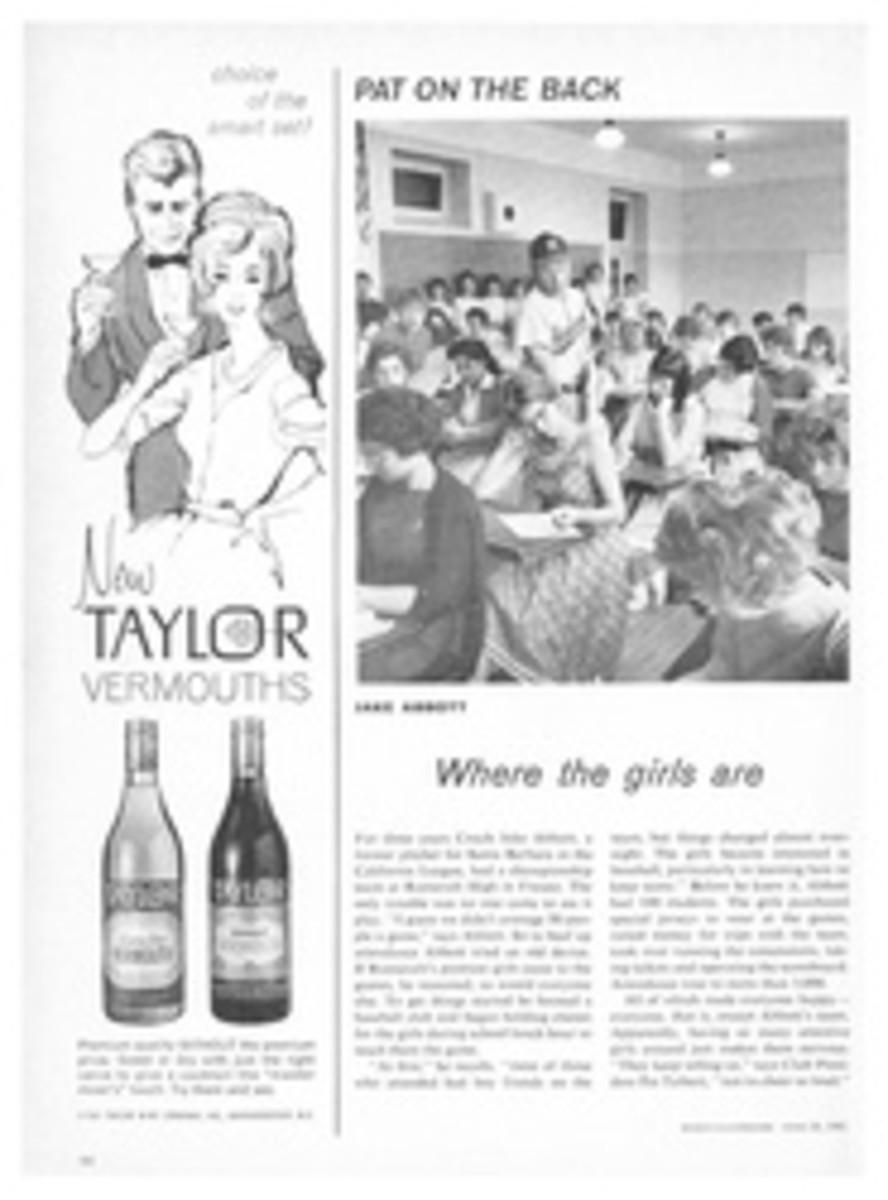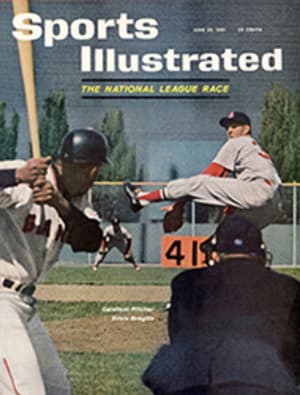
The end of an anomaly
With last week's rain-soaked, fog-clouded Le Mans 24-hour auto race the checkered flag fell for the last time on a strange sports car anomaly—the big "prototype" cars that appeared in 1949 at the postwar resumption of this biggest and grandest of the world's road events. Some 200,000 persons, in a traditional Le Mans cork-popping frame of mind, went out to see the final swift rites. What they saw was the highest expression—or lowest, depending on one's point of view—of the controversial prototype idea. The winning front-engined Ferrari set a new speed record of 115.8 mph for 24 hours, and the field included an even faster but as yet unproved rear-engined Ferrari special.
Under the prototype rule manufacturers were permitted to enter cars which supposedly were the forerunners of Grand Touring, or road model, machines. Sometimes the road models actually were built—but not often. Italy's Enzo Ferrari himself, the grizzled builder of the cars now dominating both Grand Prix and sports car racing, has correctly labeled the prototype "a racing car with two seats."
It was only the shortage of suitable touring cars following the war that caused these deviates to be admitted at all. The rule makers yearned for the old days when Le Mans could, in all its variety, be called a test of a manufacturer's showroom product and a goad to him to improve it. But as ultrasophisticated Mercedes and Jaguars and Ferraris and the like took to the Le Mans and other racecourses under the guise of prototype models, the public developed a taste for them, and the rule makers came up with some weird compromises that pleased no one. Let there be full-width windshields, they said at one point, and this resulted, among other things, in as hideous a piece of grotesquerie as Le Mans has seen—the "birdcage" Maserati with "windshield" extending from nose to cowl. Let there be luggage space, they ordered, after which the prototypes erupted ugly bumps and bulges.
In recent months, however, the sporting arm of the FIA, governing body of road racing, has found its courage and decided that prototypes will be barred after 1961. Beginning next year, the world championship for sports cars (decided in a series of races including Le Mans and the American Sebring 12-hour event) will be contested among true Grand Touring cars.
What remains to be seen is whether the FIA will designate cars in full showroom touring trim—such cars as the touring Ferraris, Mercedes, Maseratis, Jaguars and Aston Martins now in more-or-less mass production—or some variant on the Grand Touring theme.
All the while the prototypes were winning Le Mans's over-all prize, of course, a number of touring cars (often called "production" cars) were among the Le Mans competitors, racing for awards in their own categories. Whether little, low-priced MGs or larger, elegant Ferraris, these bread-and-butter cars will no doubt continue to wage the battle of the showrooms at Le Mans. And if a strict touring-car rule is adopted when the FIA makes its code specific later in the year, presumably Ferrari will have a big jump on its rivals. Today no other competitive model races so successfully.
Indeed, as the blunt, intense American Phil Hill and his Belgian co-driver, Olivier Gendebien, handily won this year's over-all honors in their flame-red prototype, a Grand Touring Ferrari driven by Britain's ace of aces, Stirling Moss, and his fast-improving countryman, Graham Hill, at one point nosed up among the other prototypes into third place. Their car broke down with half the race yet to be run—but another GT Ferrari, driven by Frenchmen Pierre Noblet and Jean Guichet, did not break down and finished third.
Moss and Hill were not the only drivers sidelined; rarely before had there been so many failures, mechanical and otherwise, removing 34 of the 55 starters. Most of the drivers thus dismounted could profitably take lessons from "Pheel Heel," as he is known to the Continent, and that cool boulevardier, Gendebien. They have what might be called the Astaire touch—a light yet decisive manner permitting them to baby their cars at race-winning straightaway and cornering speeds. Gendebien has now shared the Le Mans victory three times and Hill twice. Both drivers have also won at Sebring three times.
Hill's performance wasn't the only cause for cheers from this side of the Atlantic. Dick Thompson, the Washington dentist, and brewery heir Augie Pabst of Milwaukee placed a prototype Maserati fourth, behind the three leading Ferraris. Next were Kansas City's young pro Masten Gregory and Bob Holbert, an amateur from Pennsylvania. They drove the smaller prototype Porsche. Moreover, until mechanical ills put their prototype Ferrari out toward the end, the young Rodriguez brothers of Mexico City made an exciting run at Hill and Gendebien. The winning cars may still be European, but the drivers are coming in increasing numbers from across the sea.
PHOTO
WINNING FERRARI PROTOTYPE HAS SUPERWRAPAROUND WINDSHIELD, TWO-STORY TAIL

